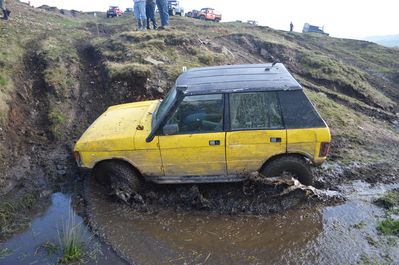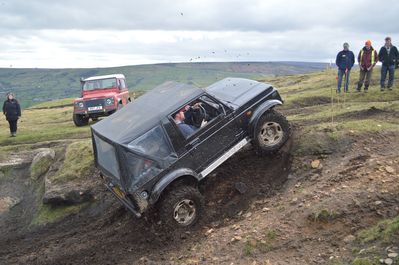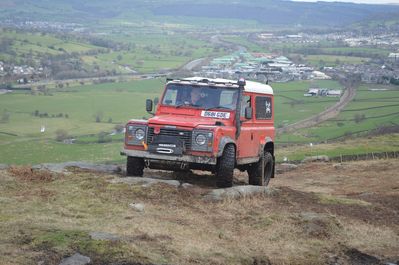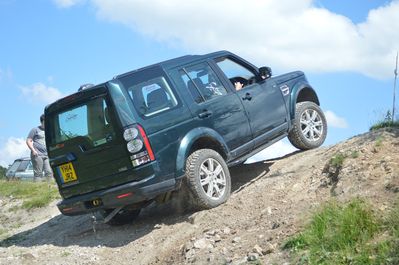14cux questions
14cux questions
For those that don't know, I have a 3.9v8 with single point LPG and megajolt, and the way it is set up, the ECU still has control of the air bypass valve and hence maintains a stable tickover by winding it in and out even when on gas. This does work quite noticeably.
The ECU (a 14cux) knows what the tickover is by looking at the flyback voltage pulses from the coils. So I am thinking - if I halve the number of these pulses (which is easy done with the EDIS setup), the the ECU would increase the RPM to what it thinks is 750 and would actually be 1500 - thus giving me a switchable fast idle.
So... Any holes in my logic there?
Roger
The ECU (a 14cux) knows what the tickover is by looking at the flyback voltage pulses from the coils. So I am thinking - if I halve the number of these pulses (which is easy done with the EDIS setup), the the ECU would increase the RPM to what it thinks is 750 and would actually be 1500 - thus giving me a switchable fast idle.
So... Any holes in my logic there?
Roger
- davew
- Chairman
- Posts: 2244
- Joined: Fri Jan 05, 2007 8:54 pm
- Location: Knaresborough
- Full Name: Dave White
I am not convinced that the stepper control is as advanced as you suggest on the 14CUX.
As far as I have been able to tell it only uses a map with fixed positions based on temperature. In addition to those temperature based positions it has an "after start" function where it opens the stepper further than it's normal position then moves it to the normal position in 3 stages. At the same time it uses a corresponding after start enrichment map.
The only other variable is the auto/aircon trigger where it pulses the stepper open by a fixed number of steps for a second or so, allowing the engine time to adjust to increased load without stalling.
I have never seen any evidence of a closed loop idle control function on this ECU. You can increase/decrease the normal idle speed by simply opening the bypass screw - that would not be possible if it were using closed loop as the stepper would try and compensate for your adjustment.
The other thing that makes me suspect that it's not using closed loop is it's inability to cope with missed steps. When you turn the ignition on and it "sticks" when being stepped in it will not resolve the problem until you turn the ignition off/on. You would think a closed loop idle circuit would make some attempt to resolve something like that when the engine is "idling" at 1500 rpm.
Having said all that, give it a go... as long as you don't try and run on petrol it shouldn't do any harm. I assume all you need to do is disconnect two of the diodes. If nothing else it will prove either way if it does have an intelligent closed loop system or not
As far as I have been able to tell it only uses a map with fixed positions based on temperature. In addition to those temperature based positions it has an "after start" function where it opens the stepper further than it's normal position then moves it to the normal position in 3 stages. At the same time it uses a corresponding after start enrichment map.
The only other variable is the auto/aircon trigger where it pulses the stepper open by a fixed number of steps for a second or so, allowing the engine time to adjust to increased load without stalling.
I have never seen any evidence of a closed loop idle control function on this ECU. You can increase/decrease the normal idle speed by simply opening the bypass screw - that would not be possible if it were using closed loop as the stepper would try and compensate for your adjustment.
The other thing that makes me suspect that it's not using closed loop is it's inability to cope with missed steps. When you turn the ignition on and it "sticks" when being stepped in it will not resolve the problem until you turn the ignition off/on. You would think a closed loop idle circuit would make some attempt to resolve something like that when the engine is "idling" at 1500 rpm.
Having said all that, give it a go... as long as you don't try and run on petrol it shouldn't do any harm. I assume all you need to do is disconnect two of the diodes. If nothing else it will prove either way if it does have an intelligent closed loop system or not
Hi Dave,
Here is a video which I believe is showing the 14CUX doing closed loop throttle control using the air bypass valve.
I pulled away and then - with my foot off the throttle I eased on the brakes until I was braking reasonably hard (considering) and then - still with no throttle - I put the clutch in. At this point it becomes clear that the ABV has been opened by the 14CUX in response to the low (around 400rpm) idle speed imposed by the brakes, as we see the revs rise to around 2000pm. Over the next few seconds that ABV is closed in stages byt the 14CUX until the normal tickover speed is regained.
http://www.youtube.com/watch?v=Q8UYOuRietc&feature=youtube_gdata_player
The base idle speed adjustment is just that - if the ABV is totally shut then it is what controls the idle. This is to give a lowest normal level. This is why - when adjusting the base idle speed - the first job is to blank off the ABV pipe.
At least - those are my interpretations, but I am always open to suggestions
Edited:
Yes the idea is to cut two of the diodes out, but I have realised I will have to be a little bit crafty since I want
pulse-miss-pulse-miss-pulse-miss-pulse-miss-
and not
pulse-pulse-miss-miss-pulse-pulse-miss-miss-
just in case the ECU 'thinks' that I have a misfire.
Here is a video which I believe is showing the 14CUX doing closed loop throttle control using the air bypass valve.
I pulled away and then - with my foot off the throttle I eased on the brakes until I was braking reasonably hard (considering) and then - still with no throttle - I put the clutch in. At this point it becomes clear that the ABV has been opened by the 14CUX in response to the low (around 400rpm) idle speed imposed by the brakes, as we see the revs rise to around 2000pm. Over the next few seconds that ABV is closed in stages byt the 14CUX until the normal tickover speed is regained.
http://www.youtube.com/watch?v=Q8UYOuRietc&feature=youtube_gdata_player
The base idle speed adjustment is just that - if the ABV is totally shut then it is what controls the idle. This is to give a lowest normal level. This is why - when adjusting the base idle speed - the first job is to blank off the ABV pipe.
At least - those are my interpretations, but I am always open to suggestions
Edited:
Yes the idea is to cut two of the diodes out, but I have realised I will have to be a little bit crafty since I want
pulse-miss-pulse-miss-pulse-miss-pulse-miss-
and not
pulse-pulse-miss-miss-pulse-pulse-miss-miss-
just in case the ECU 'thinks' that I have a misfire.
Tecnick wrote:NO
Cheers Nick
Well I am looking to put the tank and control systems from my little garage compressor, into the back of the RRC where it will be filled using the aircon pump on the engine. I have read that at 1500rpm the things can shift enough air to blow up tyres in a matter of seconds.
I could become very popular after trials I think
Who is online
Users browsing this forum: No registered users and 14 guests




